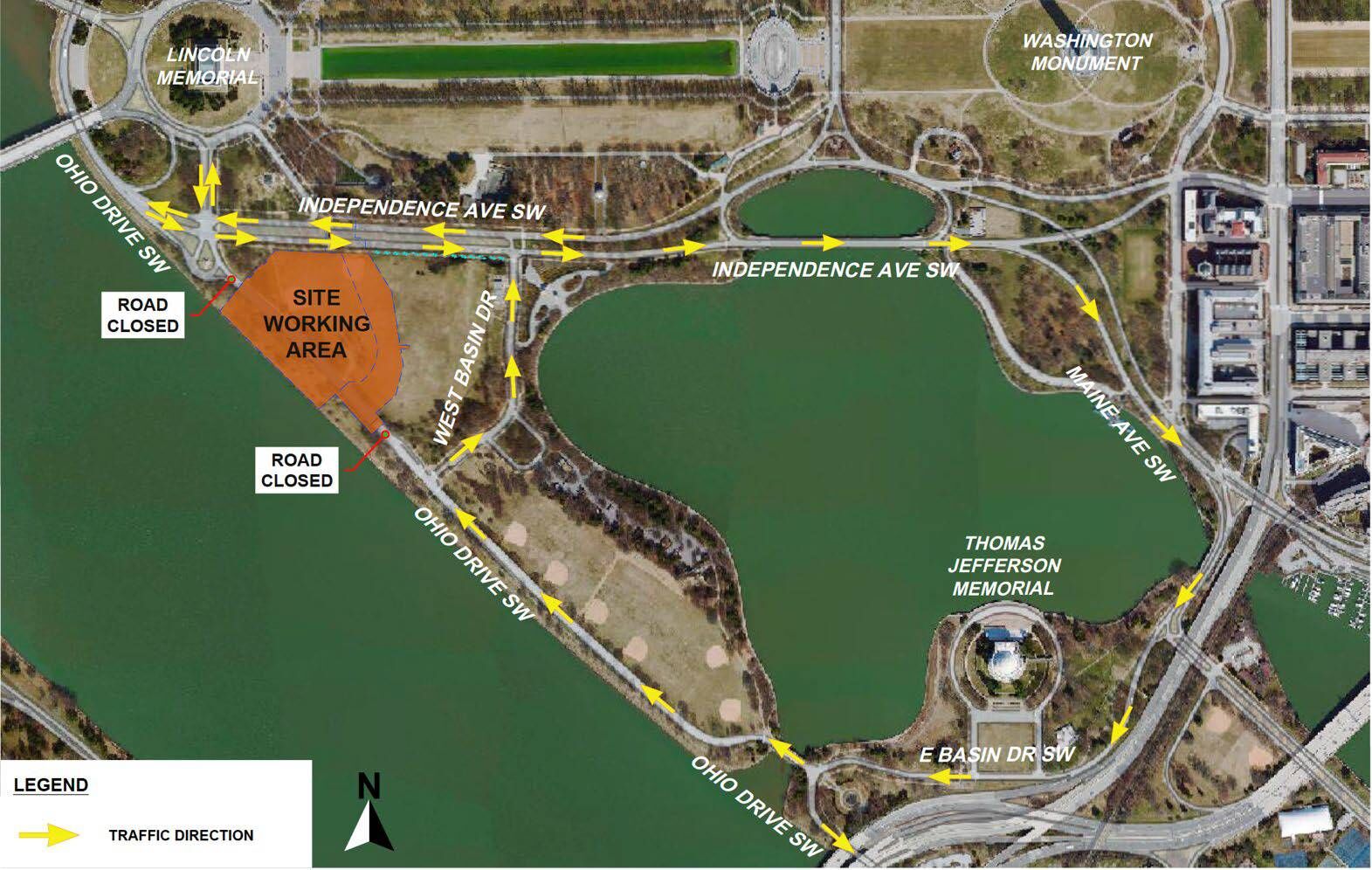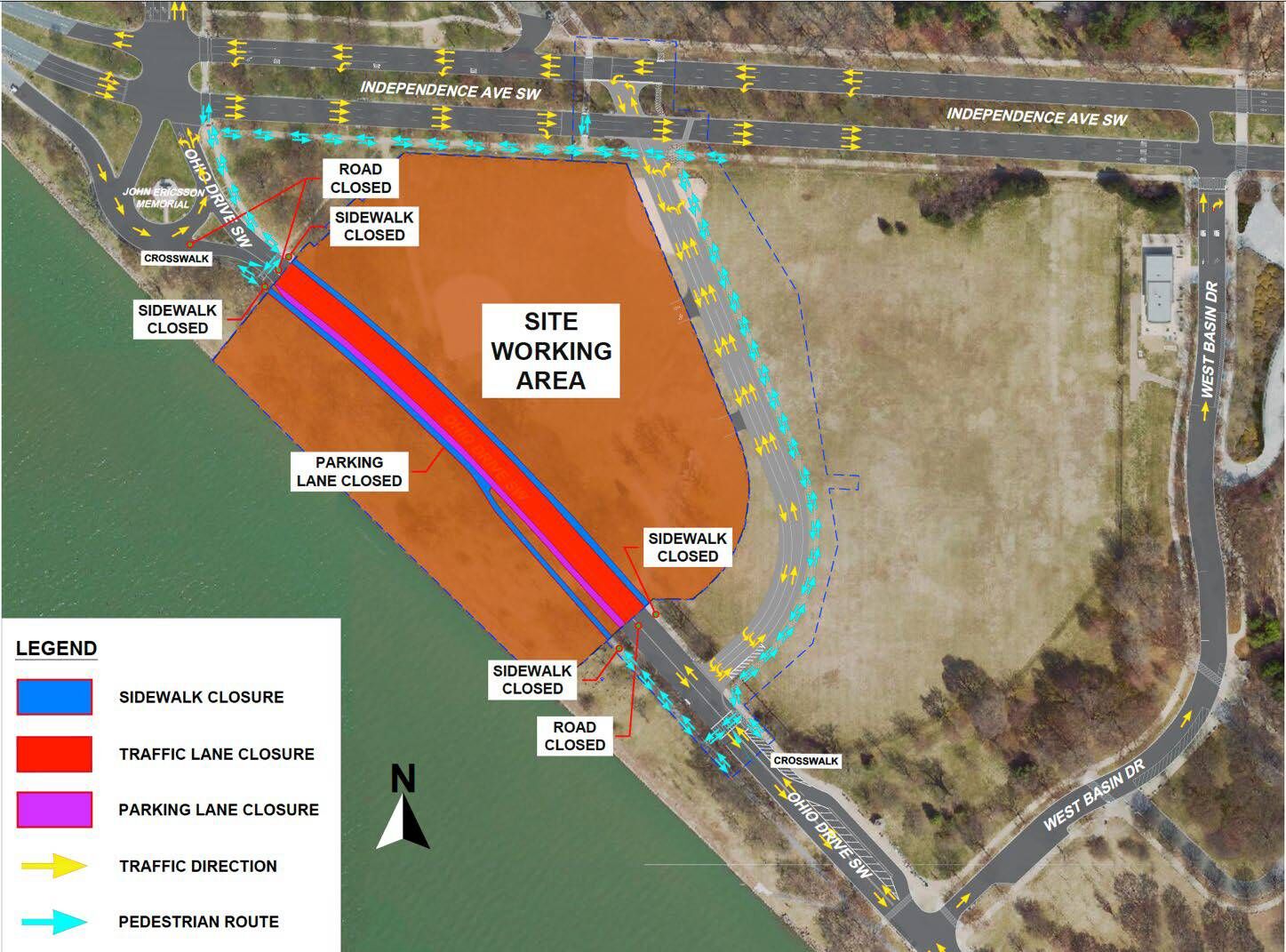Heads up, drivers: A small chunk of road along the Potomac River in D.C., near a key commuter route, is set to close for the next six years — and it could impact your drive into and out of the District.
The portion of Ohio Drive in Southwest D.C. that will close Monday, June 17, is from Independence Avenue to West Basin Drive. That’s south of the Lincoln Memorial, just off the Arlington Memorial Bridge. The road won’t fully reopen until 2030. It’s all part of a major project to build a massive tunnel to keep sewer overflow from gushing into the Potomac River during heavy rain.
D.C. Water issued a heads up about the traffic closures in a news release this week.
Listen to WTOP traffic on the 8s for the latest on roadway conditions
Starting Monday, drivers heading west on Ohio Drive will have to use West Basin Drive to access Independence Avenue. Drivers heading east from the Virginia side, looking to access Ohio Drive, will have to continue on Independence Avenue, circle around the Tidal Basin until Maine Avenue and use East Basin Drive.
The work will also close sidewalks and parking lanes.

There will be road signs and flaggers along the road directing vehicles through the closures but drivers should expect some delays.
By Oct. 15, crews expect to complete a temporary “relocated” Ohio Drive northwest of West Basin Drive that will intersect with Independence Avenue providing easier access. That temporary pass-through will remain open until the full project is completed in 2030.

The closure is necessary for crews to work on the Potomac River Tunnel, the next major phase of D.C. Water’s “DC Clean Rivers Project.”
The massive project entails building a huge sewer tunnel and other infrastructure to capture sewer overflow into the Potomac River and carry it to the Blue Plains wastewater treatment facility instead.
Officials with D.C. Water say the tunnel is needed to reduce sewer overflow into the Potomac and improve the water quality of the river and the Chesapeake Bay.
Sewer overflow into the river can happen during heavy rainfall that overloads the existing capacity of the water system. Overall, an estimated 654 million gallons of sewer overflow enter the Potomac through rainfall during an average year. The new tunnel aims to cut that by 93%.
Last fall, crews completed work on the Northeast Boundary tunnel, a 5-mile underground tunnel in Northeast that aims to reduce sewer overflow into the Anacostia River.
Editor’s note: An earlier version of this story misstated the total number of gallons of sewer overflow that enters the Potomac in an average year. The story has been corrected and updated.
Get breaking news and daily headlines delivered to your email inbox by signing up here.
© 2024 WTOP. All Rights Reserved. This website is not intended for users located within the European Economic Area.








